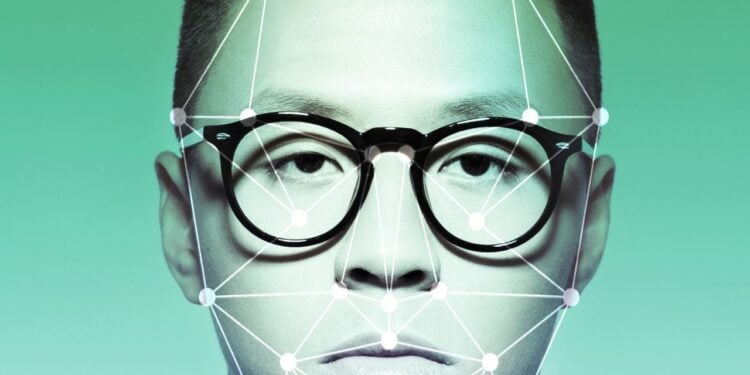- Deepfake technology poses severe risks to businesses through financial fraud and reputational damage.
- Organizations need to focus on enhancing cybersecurity, educating employees, and advocating for stronger legal regulations to counter deepfake threats.
- Despite its dangers, deepfake technology also offers beneficial applications, such as improving accessibility and training simulations.
You’re probably sick of hearing about artificial intelligence, but you need to push through that AI-fatigue to educate yourself about the business dangers it can bring.
Namely, the increasingly worrisome use of deepfake technology.
Deepfake technology has emerged as a double-edged sword. While it offers innovative applications in entertainment and customer service, its potential to wreak havoc on businesses is increasingly apparent. As we look towards the future of work, understanding the perils posed by deepfakes — and how to handle them — is critical for safeguarding organizational integrity and trust.
What is Deepfake Technology?
Deepfake technology uses advanced AI algorithms to create hyper-realistic fake images, videos, and audio recordings. The term “deepfake” combines “deep learning” and “fake,” reflecting the sophisticated machine learning techniques used to produce deceptive media.
Unlike traditional edited or photoshopped content, deepfakes utilize neural networks to blend existing and new footage seamlessly, making them incredibly difficult to detect.
The Threats of Deepfakes
While the potential harms caused by deepfakes can be varied and layered, there are two primary risks for businesses to consider.
1.Financial Fraud and Intellectual Property Theft
One of the most alarming aspects of deepfake technology is its potential for financial fraud. This year a finance worker in Hong Kong was duped into transferring approximately $25 million to a fraudulent account after a video conference with what appeared to be his CFO and other coworkers. There are innumerable opportunities for similar, smaller-scale theft.
Additionally, a fake version of a supervisor asking for an update on a project could be a way to get workers to reveal trade secrets about ongoing developments that could constitute intellectual property theft and help competing companies.
These incidents underscore the ease with which deepfakes can impersonate trusted individuals, leading to significant financial losses.
2.Reputational Damage
The risk to businesses extends beyond financial harm. Deepfakes can cause severe reputational damage by spreading misinformation and false allegations. For instance, a deepfake video of a CEO making damaging statements could tank a company’s stock price, erode stakeholder trust, or even sabotage a pending business deal. The ability to manipulate media so convincingly poses a serious threat to the credibility of businesses worldwide.
The Future of Work: Avoiding Deepfake Risks
The implications of deepfake technology on the future of work are huge as society moves toward an increasingly digital workplace.
Here are some key areas on which businesses need to focus to safeguard future success.
1.Enhancing Cybersecurity Measures
Organizations must invest in advanced cybersecurity measures to detect and mitigate deepfake threats. Technologies like Intel’s FakeCatcher, which analyzes subtle physiological details for real-time detection, and Microsoft’s AI-powered deepfake detection software, which provides confidence scores for media authenticity, might become essential tools in this fight.
2.Educating Employees
Raising awareness among employees about the dangers of deepfakes is also incredibly important. Training programs should include information on how to recognize potential deepfake content and the steps to take if they encounter suspicious media. This proactive approach can help prevent incidents like the Hong Kong financial fraud case.
These programs should provide a thorough understanding of the various forms deepfakes can take, from manipulated video and audio content to synthetic text generated by advanced AI models.
Employees must be equipped with practical skills to critically assess the authenticity of media, such as cross-verifying information through reliable sources, examining metadata for inconsistencies, and utilizing AI-powered detection tools.
Training should emphasize the importance of adopting a security-first mindset. Employees must be aware of the broader implications of deepfakes beyond immediate financial fraud, including threats to corporate reputation, internal trust, and even national security.
Organizations should also establish clear protocols for reporting and responding to suspected deepfake incidents. These protocols should outline the steps employees should take when they encounter suspicious media, including contacting designated security teams, preserving evidence, and avoiding actions that could exacerbate potential harm.
This structured approach ensures that risks are promptly addressed and lessons are continuously learned and integrated into ongoing training initiatives.
3.Legal and Ethical Considerations, and Accountability
While deepfakes are generally legal, their malicious use can violate laws related to defamation, hate speech, and much more. Businesses should advocate for stronger legislation to combat the misuse of deepfake technology and protect victims. At least 40 states have pending legislation aimed at regulating deepfakes, with several already banning their use in election interference and nonconsensual pornography.
The integration of deepfake detection tools into organizational workflows is essential, but it must be paired with a commitment to ethical AI practices. Companies developing deepfake technology should be held accountable for the potential misuse of their creations.
Transparency in AI development, including clearly defined usage policies and ethical guidelines, can help ensure that these technologies are developed and utilized responsibly. Businesses should also engage in self-regulation and adopt operational practices that prioritize the verification of digital content before its release to the public.
4.Positive Applications: A Balanced View
Despite the risks, deepfake technology also offers positive applications that can enhance the future of work. For example, synthetic avatars can help individuals with physical or mental disabilities express themselves online, encouraging inclusivity. It can also be used for workplace training simulations.
Deepfake technology represents a significant challenge for businesses as we look toward the future of work. While its potential for harm is undeniable, with the right strategies and technologies, organizations can mitigate these risks and optionally harness the positive aspects of this powerful, and sometimes scary, tool.


 Dr. Gleb Tsipursky – The Office Whisperer
Dr. Gleb Tsipursky – The Office Whisperer Nirit Cohen – WorkFutures
Nirit Cohen – WorkFutures Angela Howard – Culture Expert
Angela Howard – Culture Expert Drew Jones – Design & Innovation
Drew Jones – Design & Innovation Jonathan Price – CRE & Flex Expert
Jonathan Price – CRE & Flex Expert














